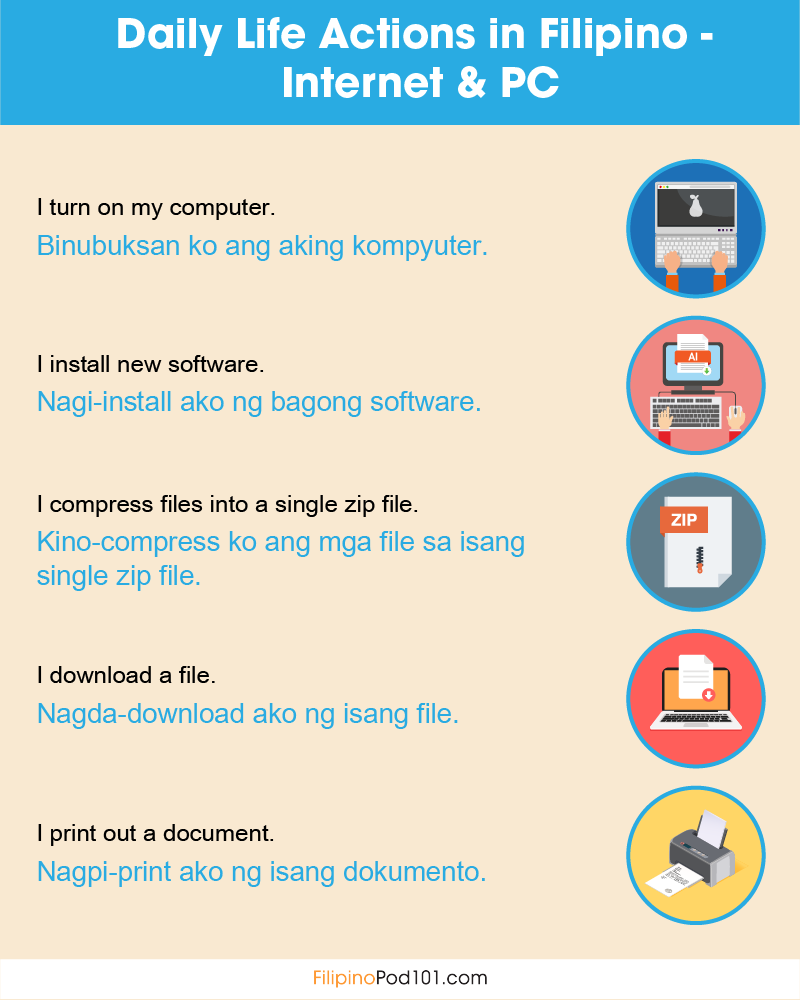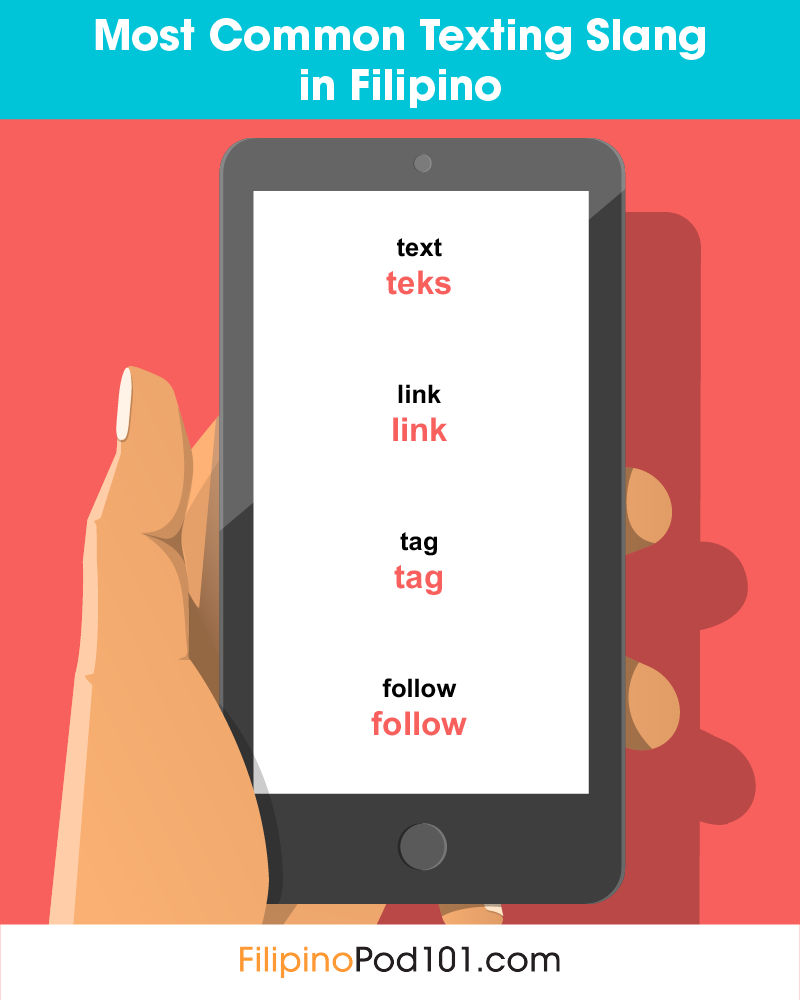
You’re learning to speak Filipino, and it’s going well. Your confidence is growing! So much so that you feel ready to share your experiences on social media—in Filipino.
At Learn Filipino, we make this easy for you to get it right the first time. Post like a boss with these phrases and guidelines, and get to practice your Filipino in the process.

1. Talking about Your Restaurant Visit in Filipino
Eating out is fun, and often an experience you’d like to share. Take a pic, and start a conversation on social media in Filipino. Your friend will be amazed by your language skills…and perhaps your taste in restaurants!
Juan eats at a restaurant with his friends, posts an image of the group, and leaves this comment:

POST
Let’s break down Juan’s post.
Masarap kumain kapag kasama ang barkada!
“It’s fun to eat when together with the gang!”
1- Masarap kumain
First is an expression meaning “It’s fun to eat.”
We use this expression to say that an action is fun to do. By changing the verb, this expression can be used for other things such as traveling or shopping.
2- kapag kasama ang barkada
Then comes the phrase – “when together with the gang.”
Young adults in the Philippines usually go out to eat after work on Fridays because there’s no work the next day. They usually take pictures of the food they eat and ask the waiters to take group pictures of them inside the restaurant. Photos of food and groups of friends are some of the most common posts you will find on social media in the Philippines. Some people take home food from the restaurant as a souvenir for their family.
COMMENTS
In response, Juan’s friends leave some comments.
1- Mas masarap kumain kung kasama ako!
His college friend, Richard, uses an expression meaning – “It’s more fun if I’m there!”
Use this expression when you’re being humorous, but also feel a bit left out.
2- Ang yaman ni tito! Libre mo rin ako.
His girlfriend’s nephew, Sam, uses an expression meaning – “Uncle is rich! Treat me too.”
This is another phrase that indicates you feel a bit left out, and wish you could be included.
3- So hindi masarap kumain sa bahay?
His girlfriend, Ana, uses an expression meaning – “So it’s not fun to eat at home?”
Use this expression if you’re perhaps feeling a bit insulted that the poster eats out, as opposed to at home, but it could be meant humorously too.
4- Sa susunod sama rin kami!
His high school friend, Liza, uses an expression meaning – “Next time, we’ll join too!”
Use this expression when you are feeling optimistic that you will be part of the party next time.
VOCABULARY
Find below the key vocabulary for this lesson:
barkada: “gang, group of friends”
kasama: “with, including”
tito: “uncle”
ilibre: “to be treated”
kumain: “eat”
bahay: “house”
sumama: “to join”
susunod: “next”
So, let’s practice a bit. If a friend posted something about having dinner with friends, which phrase would you use?
Now go visit a Filipino restaurant, and wow the staff with your language skills!
2. Post about Your Mall Visit in Filipino
Another super topic for social media is shopping—everybody does it, most everybody loves it, and your friends on social media are probably curious about your shopping sprees! Share these Filipino phrases in posts when you visit a mall.
Ana shop with her sister at the mall, posts an image of them in the shop, and leaves this comment:

POST
Let’s break down Ana’s post.
Maganda ba? Paki-comment.
“Is it beautiful? Please comment.”
1- Maganda ba?
First is an expression meaning “Is it beautiful?”
We ask this question when we want to know if something – clothes, movies, songs, etc, is good or beautiful. Filipinos often ask their friends for advice and post selfies with the items they’ve just bought on their social media sites.
2- Paki-comment.
Then comes the phrase – “Please comment”.
Filipinos often borrow English words and expressions to use them in the context of Filipino grammar. You can find a lot of English words combined with Filipino words on social media.
COMMENTS
In response, Ana’s friends leave some comments.
1- Ang ganda! Pang-ootd
Her neighbor, Maria, uses an expression meaning – “Nice O.O.T.D. (Outfit Of The Day)!”
Use this expression when you feel appreciative of the garment shown in the poster’s photo.
2- Grabe! Ikaw na tita ang maganda.
Her nephew, Sam, uses an expression meaning – “Fine! You’re the pretty one, aunt.”
Use this expression if you want to compliment the poster on her looks. Careful not to insult the sister, though!
3- Alin? Yung damit o ikaw? Hehehe
Her high school friend, Bea, uses an expression meaning – “Which one? The dress or you? Hahaha”
Use this expression if you’re feeling humorous and want to tease the poster.
4- Ganda talaga!
Her boyfriend, Juan, uses an expression meaning – “Really nice!”
Use this phrase to express appreciation.
VOCABULARY
Find below the key vocabulary for this lesson:
maganda: “beautiful”
pang: “for”
ikaw na: “you’re the one “
alin: “which”
talaga: “really”
grabe: “super, over extreme, severe”
paki: “please”
tita: “aunt”
So, if a friend posted something about going shopping, which phrase would you use?
3. Talking about a Sport Day in Filipino
Sports events, whether you’re the spectator or the sports person, offer fantastic opportunity for great social media posts. Learn some handy phrases and vocabulary to start a sport-on-the-beach conversation in Filipino.
Juan plays with his friends at the beach, posts an image of himself on the beach, and leaves this comment:

POST
Let’s break down Juan’s post.
Ako dapat ang representative natin sa Olympics!
“I should be our representative for the Olympics!”
1- Ako dapat
First is an expression meaning “I should.”
This expression is used to suggest that we should be the person to perform an action. Filipinos are not shy on social media and often brag about themselves or volunteer themselves to do something challenging. For example, if someone were to post that they lost in a competition, many of their friends would comment that they should have been in the competition instead. However, most of these comments are not taken seriously and considered to be jokes.
2- ang representative natin sa Olympics
Then comes the phrase – “be our representative in the Olympics.”
The Olympics is a very popular event in the Philippines, and many Filipinos root for the country winning its first gold medal. It won one gold medal for junior archery in the 2014 Nanjing Summer Olympics. Filipino athletes have earned a total of 102 medals for the summer games but has yet to receive gold.
COMMENTS
In response, Juan’s friends leave some comments.
1- Weh? Di nga?
His nephew, Sam, uses an expression meaning – “Oh? Really?”
Use this expression to challenge the poster’s comment.
2- Yan pala ang trip mo pre.
His college friend, Richard, uses an expression meaning – “So that’s what you’re into, bro.”
Use this expression when you are feeling frivolous, and just to be part of the conversation.
3- Kapal!
His high school friend, Liza, uses an expression meaning – “Thick-skinned!”
Use this expression when you want to give an opinion about the poster’s attitude.
4- Pogi!
His girlfriend, Ana, uses an expression meaning – “Handsome!”
Use this expression to compliment the poster on their good looks.
VOCABULARY
Find below the key vocabulary for this lesson:
ako: “I”
natin: “our”
pre: “bro / brother (casual reference of a male speaker to his male friend)”
kapal: “thick, thick-skinned (used to describe the action of someone shamelessly promoting or bragging about himself/herself)”
pogi: “handsome”
di nga: “really? “
weh: “oh (used to express doubt)”
dapat: “should”
Which phrase would you use if a friend posted something about sports?
But sport is not the only thing you can play! Play some music, and share it on social media.
4. Share a Song on Social Media in Filipino
Music is the language of the soul, they say. So, don’t hold back—share what touches your soul with your friends!
Ana shares a song she just heard at a party, posts an image of the artist, and leaves this comment:

POST
Let’s break down Ana’s post.
Fav song ko na to!
“This is now my favorite song!”
1- fav song ko na
First is an expression meaning “now my favorite song.”
This expression can be used to talk about your favorite things simply by changing the noun.
2- to
Then comes the phrase – “this.”
Filipinos often share their emotions on social media by posting songs that reflect their moods. Aside from selfies or group photos, sharing songs and videos are among the top posts you’ll find on Philippine social media. Some Filipinos like making their own videos on YouTube and adding their favorite songs to the background. Others will make music videos with their partner’s pictures, sometimes even adding their own quotes to the video, as a symbol of their love.
COMMENTS
In response, Ana’s friends leave some comments.
1- Gawin nating theme song.
Her boyfriend, Juan, uses an expression meaning – “Let’s make this our theme song.”
Use this expression when you’re feeling romantic and wish to give special meaning to the song.
2- Hindi ako maka-relate.
Her nephew, Sam, uses an expression meaning – “I can’t relate.”
Use this expression when you want to share your personal, negative opinion about the song.
3- Ang daming feelings!
Her high school friend, Bea, uses an expression meaning – “The feels!”
Use this expression to indicate that you like the song, and that it touches you.
4- Ang ganda ng kanta!
Her neighbor, Maria, uses an expression meaning – “The song is beautiful!”
Use this expression when you wish to compliment the song.
VOCABULARY
Find below the key vocabulary for this lesson:
fav: “favorite”
gawin: “to make”
maka: “to (added before a verb to express the ability to perform that verb)”
dami: “many”
kanta: “song”
hindi: “not, no”
na: “already”
to (ito): “this”
Which song would you share? And what would you say to a friend who posted something about sharing music or videos?
Now you know how to start a conversation about a song or a video on social media!
5. Filipino Social Media Comments about a Concert
Still on the theme of music—visiting live concerts and shows just have to be shared with your friends. Here are some handy phrases and vocab to wow your followers in Filipino!
Juan goes to a concert, posts an image of the crowd, and leaves this comment:

POST
Let’s break down Juan’s post.
Sobrang saya ng concert!
“The concert was super fun!”
1- sobrang saya
First is an expression meaning “super fun.”
We use this expression to describe something or someone as being very happy or great fun.
2- ng concert
Then comes the phrase – “the concert.”
Concerts are popular in the Philippines. Many live bands play in restaurants at night, especially on Fridays and weekends, catering to young adults that are off from work. Here, customers can request the songs they want the band to play. They can also ask to sing or play together with the band. These live performances usually end late, some even continuing on until 1 or 2 AM.
COMMENTS
In response, Juan’s friends leave some comments.
1- Ayos!
His college friend, Richard, uses an expression meaning – “That’s good!”
Use this expression to show that you approve of the post.
2- Yun oh!
His high school friend, Liza, uses an expression meaning – “There it is!”
Use this expression to show you are feeling optimistic.
3- Mabuti at nag-enjoy kayo.
His supervisor, Bong, uses an expression meaning – “Great, you enjoyed it.”
Use this expression to just comment and be part of the conversation in a benevolent, friendly way.
4- Naks naman. Inggit much.
His girlfriend’s nephew, Sam, uses an expression meaning – “How great. I envy you a lot.”
Use this expression when you feel a bit jealous of the poster and his experience, but not in a nasty way.
VOCABULARY
Find below the key vocabulary for this lesson:
sobra: “super, too much”
ayos: “good, excellent, wonderful, fantastic”
yun oh!: “there it is! (used to express excitement about something or someone; used to emphasize something or someone)”
mabuti: “good”
kayo: “you (plural)”
naks: “good, great”
inggit: “envy, jealous”
saya: “fun, happy”
If a friend posted something about a concert , which phrase would you use?
6. Talking about an Unfortunate Accident in Filipino
Oh dear. You broke something by accident. Use these Filipino phrases to start a thread on social media. Or maybe just to let your friends know why you are not contacting them!
Ana accidentally breaks her mobile phone, and leaves this comment:

POST
Let’s break down Ana’s post.
Nasira ang phone ko!
“My phone broke!”
1- Nasira
First is an expression meaning “broke.”
We use this word to talk about things that are broken. For example, you can use it in reference to electronics, furniture, clothing, accessories, household items, etc.
2- ang phone ko
Then comes the phrase – “my phone.”
Some words used on Filipino social media are borrowed from the English language, especially terms related to technology and the internet.
COMMENTS
In response, Ana’s friends leave some comments.
1- Naku! Anong nangyari?
Her supervisor, Bong, uses an expression meaning – “Oh my! What happened?”
Use this question to show your surprise and want to know the details of the accident.
2- Nandito lang kami kung kailangan mo ng tulong.
Her neighbor, Maria, uses an expression meaning – “We’re here if you need help.”
Use this expression if you feel helpful.
3- Sayang!
Her nephew, Sam, uses an expression meaning – “What a waste! (too bad)”
Use this expression to comment with your opinion, and it’s also a way of expressing sympathy.
4- Bakit nasira?
Her boyfriend, Juan, uses an expression meaning – “Why did it break?”
Ask this question if you would like more details about the incident, which is a nice way to keep the conversation going.
VOCABULARY
Find below the key vocabulary for this lesson:
nasira: “broke”
nangyari: “happened”
nandito: “here”
tulong: “help”
kailanganin: “to need”
sayang: “what a waste”
bakit: “why”
ano: “what”
If a friend posted something about having broken something by accident, which phrase would you use?
So, now you know how to describe an accident in Filipino. Well done!
7. Chat about Your Boredom on Social Media in Filipino
Sometimes, we’re just bored with how life goes. And to alleviate the boredom, we write about it on social media. Add some excitement to your posts by addressing your friends and followers in Filipino!
Juan gets bored at home, and leaves this comment:

POST
Let’s break down Juan’s post.
Walang magawa sa bahay…
“Nothing to do at home….”
1- walang magawa
First is an expression meaning “nothing to do.”
This expression indicates that the speaker is bored with his or her current situation and cannot do anything about it.
2- sa bahay
Then comes the phrase – “at home”.
During hot seasons, most Filipinos stay at home to avoid the heat. Many tend to take afternoon naps. Children are also ordered to take afternoon naps during summer vacation. However, some people go out to the malls to cool themselves off and ease their boredom.
COMMENTS
In response, Juan’s friends leave some comments.
1- Sinabi mo pa!
His college friend, Richard, uses an expression meaning – “You said it!”
Use this expression to indicate that you’re feeling the same as the poster.
2- Matulog ka na lang.
His girlfriend, Ana, uses an expression meaning – “Just sleep.”
Use this expression to give advice.
3- Ako rin!
His high school friend, Liza, uses an expression meaning – “Me too!”
This is another expression that shows you feel the same as the poster.
4- Buti ka pa!
His girlfriend’s high school friend, Bea, uses an expression meaning – “Good for you! (envious)”
Use this expression to be funny.
VOCABULARY
Find below the key vocabulary for this lesson:
wala: “nothing”
bahay: “home, house”
sinabi: “to say”
rin: “too”
matulog: “to sleep”
buti: “good”
lang: “only”
sa: “at”
If a friend posted something about being bored, which phrase would you use?
Still bored? Share another feeling and see if you can start a conversation!
8. Exhausted? Share It on Social Media in Filipino
Sitting in public transport after work, feeling like chatting online? Well, converse in Filipino about how you feel, and let your friends join in!
Ana feels exhausted after a long day at work, posts an image of herself looking tired, and leaves this comment:

POST
Let’s break down Ana’s post.
Pagod! Grabe ang araw na to!
“Tired! This day is just too much!”
1- pagod
First is an expression meaning “tired.”
We use this word to express that we are tired or exhausted from doing something.
2- grabe ang araw na to
Then comes the phrase – “this day is too much.”
We use this phrase when we feel especially tired compared to other days. Filipinos often say this when they’re exhausted from working overtime or getting stuck in traffic on the way home.
COMMENTS
In response, Ana’s friends leave some comments.
1- Galing sa work?
Her high school friend, Bea, uses an expression meaning – “From work?”
Ask this question if you want to know more details about the post.
2- Pahinga ka na mahal.
Her boyfriend, Juan, uses an expression meaning – “Rest already, dear.”
Use this expression to show that you care, and want to advise your beloved to rest.
3- Good job ngayong araw.
Her supervisor, Bong, uses an expression meaning – “Good job today.”
This is a compliment from the supervisor, which means he was pleased with her work.
4- Gusto mo ng masahe tita?
Her nephew, Sam, uses an expression meaning – “Do you want a massage, aunt?”
Use this expression to make a suggestion, indicating that you want to be helpful.
VOCABULARY
Find below the key vocabulary for this lesson:
grabe: “too much”
araw: “day”
magpahinga: “to rest/to relax”
pagod: “tired”
gusto: “to like/ to want”
masahe: “massage”
galing: “from”
ngayon: “now, today”
If a friend posted something about being exhausted, which phrase would you use?
Now you know how to say you’re exhausted in Filipino! Well done.
9. Talking about an Injury in Filipino
So life happens, and you manage to hurt yourself during a soccer game. Very Tweet-worthy! Here’s how to do it in Filipino.
Juan suffers an injury, posts an image of himself in pain, and leaves this comment:

POST
Let’s break down Juan’s post.
Napilayan ako kanina. Ang sakit!
“I sprained myself. It’s painful!”
1- napilayan ako kanina
First is an expression meaning “I sprained myself.”
We use this expression to say that we hurt ourselves or sprained some part of our body.
2- ang sakit
Then comes the phrase – “it’s painful/ it hurts.”
Filipino men typically get injured after playing basketball with their friends since basketball is one of the most popular sports in the country and almost all the men play it. Companies even encourage their employees to play basketball with their coworkers as a way of encouraging work and life balance.
COMMENTS
In response, Juan’s friends leave some comments.
1- Mag-ingat ka Juan. Kaya mo yan.
His supervisor, Bong, uses an expression meaning – “Take care, Juan. You can do it.”
Use this expression to show your concern, and offer support.
2- Ingat sa susunod.
His neighbor, Maria, uses an expression meaning – “Be careful next time.”
Use this expression to offer advice that also shows concern for the poster’s wellbeing.
3- Huwag kang mag-alala bukas lang magaling ka na.
His high school friend, Liza, uses an expression meaning – “Don’t worry. Tomorrow you’ll be okay.”
Use this expression to show you are feeling optimistic that the injury is not too bad.
4- Wala yan! Takbo pa!
His girlfriend’s nephew, Sam, uses an expression meaning – “That’s nothing! Come on, run!”
Use this expression if you want to lift the poster’s spirit by making a bit of fun with him.
VOCABULARY
Find below the key vocabulary for this lesson:
kanina: “earlier, a little while ago”
pagaling: “to get well”
sa: “at”
huwag: “do not”
kaya: “able, can”
sakit: “painful”
tumakbo: “to run”
wala yan: “that’s nothing”
If a friend posted something about being injured, which phrase would you use?
We love to share our fortunes and misfortunes; somehow that makes us feel connected to others.
10. Starting a Conversation Feeling Disappointed in Filipino
Sometimes things don’t go the way we planned. Share your disappointment about this with your friends!
Ana feels disappointed about today’s weather, posts an image of it, and leaves this comment:

POST
Let’s break down Ana’s post.
Walang tigil ang ulan at nasaan ka araw?
“The rain isn’t stopping, and where is the sun?”
1- walang tigil ang ulan
First is an expression meaning “the rain isn’t stopping.”
When there is heavy rain or it seems like the rain won’t stop soon, we normally use this phrase.
2- at nasaan ka araw
Then comes the phrase – “and where is the sun?.”
This phrase is from a popular Filipino song and is well-known by all generations. Filipinos have a habit of quoting relevant song lyrics when they post on social media websites. They also have a saying that sometimes the rain is caused by someone’s bad singing.
COMMENTS
In response, Ana’s friends leave some comments.
1- Itulog mo na lang yan.
Her high school friend, Bea, uses an expression meaning – “Just sleep it off.”
Use this expression to offer advice.
2- Sisikat din ang araw.
Her supervisor, Bong, uses an expression meaning – “The sun will shine too.”
Use this expression to be supportive and positive.
3- Kumanta ka kasi tita.
Her nephew, Sam, uses an expression meaning – “It’s because you sang, aunt.”
Use this expression to make fun of the poster in a friendly, teasing way.
4- Huwag kang mag-alala lilipas din yan.
Her neighbor, Maria, uses an expression meaning – “Don’t worry, it’ll pass.”
Use this expression if you want to remind the poster not to care too much.
VOCABULARY
Find below the key vocabulary for this lesson:
tumigil: “to stop”
ulan: “rain”
nasaan: “where”
itulog: “sleep it off”
sumikat: “to shine, to rise”
kumanta: “to sing”
kasi: “because”
lumipas: “to pass”
How would you comment in Filipino when a friend is disappointed?
Not all posts need to be about a negative feeling, though!
11. Talking about Your Relationship Status in Filipino
Don’t just change your relationship status in Settings, talk about it!
Juan changes his status to “In a relationship”, posts an image of it, and leaves this comment:

POST
Let’s break down Juan’s post.
Sa wakas! Sinagot na niya ‘ko!
“Finally! She said yes!”
1- sa wakas
First is an expression meaning “finally.”
This phrase is used when a long-awaited event finally materializes.
2- sinagot na niya ‘ko
Then comes the phrase – “He/She answered me already.”
Filipino men normally court and confess to women. Women can also confess to men, but normally it’s the other way around. A traditional way of courting is by serenading a woman. However, these days some couples end up together through messaging on social media sites or sending text messages.
COMMENTS
In response, Juan’s friends leave some comments.
1- Swerte mo pare! Inuman mamaya!
His college friend, Richard, uses an expression meaning – “Man, you’re lucky! Drinks later!”
Use this expression if you’re feeling appreciative of the poster’s new status, and want to celebrate it.
2- Magandang balita! Congrats sa inyong dalawa!
His supervisor, Bong, uses an expression meaning – “Good news! Congratulations to you two.”
Use this expression to congratulate the couple in a more traditional way.
3- OMG! Super bagay kayong dalawa!
His high school friend, Liza, uses an expression meaning – “Oh my God! You suit each other!”
Use this expression to show you are feeling enthusiastic and optimistic about the relationship match.
4- Dapat ilibre mo kami tito!
His girlfriend’s nephew, Sam, uses an expression meaning – “Uncle, you should treat us!”
Use this expression to show you want to celebrate the event.
VOCABULARY
Find below the key vocabulary for this lesson:
wakas: “end, final”
suwerte, swerte: “lucky”
inuman: “drink, drinking party”
mamaya: “later”
balita: “news”
dalawa: “two”
manlibre: “to treat someone”
sinagot: “to answer, to accept the person as a partner or lover”
What would you say in Filipino when a friend changes their relationship status?
Being in a good relationship with someone special is good news – don’t be shy to spread it!
12. Post about Getting Married in Filipino
Wow, so things got serious quickly, and you’re getting married. Congratulations! Or, your friend is getting married, so talk about this in Filipino.
Ana is getting married today, so she eaves this comment:

POST
Let’s break down Ana’s post.
Hindi ako makapaniwala! Kasal ko na ngayon!
“I can’t believe it! It’s my wedding day!”
1- hindi ako makapaniwala
First is an expression meaning “I can’t believe it.”
We say this when something amazing or unbelievable has happened.
2- kasal ko na ngayon
Then comes the phrase – “It’s my wedding today.”
Filipino weddings are almost the same as Western weddings. The bride normally wears a white gown and the groom a suit. Weddings can take place in church, at the beach, at the park, or anywhere the couple wishes to conduct their marriage ceremony.
COMMENTS
In response, Ana’s friends leave some comments.
1- Akin ang bouquet ha?
Her high school friend, Bea, uses an expression meaning – “The bouquet is mine, okay?”
Use this expression if you feel humorous. It is the tradition at many weddings for the bride to throw her bouquet to specifically the unmarried female guests. The one who catches it is believed to be the next bride.
2- Ako ang pinakamaswerteng lalaki sa mundo ngayon!
Her husband, Juan, uses an expression meaning – “I’m the luckiest man in the world today!”
Use this expression to indicate your pride and happiness to be the groom of the poster.
3- Pagkahaba-haba man ng prusisyon, sa simbahan din ang tuloy!
Her supervisor, Bong, uses an expression meaning – “(proverb) No matter how long the procession is, it always ends up in a church!”
This is an old proverb often used to refer to couples getting married.
4- Kayo na talaga ang para sa isa’t-isa!
Her college friend, Richard, uses an expression meaning – “You’re really meant to be with each other!”
Use this expression to show you are feeling positive about the match.
VOCABULARY
Find below the key vocabulary for this lesson:
kasal: “wedding”
pinakamaswerte: “luckiest”
akin: “mine”
pagkahaba-haba: “very long”
simbahan: “church”
isa’t-isa: “each other”
prusisyon: “procession”
tumuloy: “to continue”
How would you respond in Filipino to a friend’s post about getting married?
For the next topic, fast forward about a year into the future after the marriage…
13. Announcing Big News in Filipino
Wow, huge stuff is happening in your life! Announce it in Filipino.
Juan finds out he and his wife are going to have a baby, posts an image of him and Ana together, and leaves this comment:

POST
Let’s break down Juan’s post.
Magiging tatay na ako!
“I’m going to be a father!”
1- magiging
First is an expression meaning “will become” or “going to be”
This is used to express the future state or of something becoming.
2- tatay na ako
Then comes the phrase – “to be a father”
Filipino couples invite their closest friends to be the godmother or godfather of their babies. Usually, a child has more than one godparent, and typically there should be an equal number of male and female godparents. The godparents’ duties are mostly to give presents to the child on their birthdays and on Christmas Day.
COMMENTS
In response, Juan’s friends leave some comments.
1- Napakagandang balita! Congrats!
His neighbor, Maria, uses an expression meaning – “Very good news! Congratulations!”
Use this expression to show you are feeling positive about the news, and wish the new parents well.
2- Siguradong magiging mabuting tatay ka!
His high school friend, Liza, uses an expression meaning – “You sure are going to be a great dad!”
Use this expression to show you are feeling optimistic about the poster’s fathering potential.
3- Congrats sa inyong dalawa. Alagaan mo nang mabuti ang pamilya mo.
His supervisor, Bong, uses an expression meaning – “Congratulations to the both of you. Take good care of your family.”
This is a traditional congratulatory phrase when a couple announce a pregnancy.
4- Sana hindi mo kamukha tito.
His nephew, Sam, uses an expression meaning – “I hope the baby doesn’t look like you, uncle.”
Use this expression when you are in a humorous mood and want to tease the father a bit.
VOCABULARY
Find below the key vocabulary for this lesson:
tatay: “father, dad”
napakaganda: “very beautiful”
sigurado: “sure”
maging: “to become”
maligayang bati: “congratulations”
alagaan: “to take care”
kamukha: “to look like, to resemble”
sana hindi: “I hope not”
Which phrase would you choose when a friend announces their pregnancy on social media?
So, talking about a pregnancy will get you a lot of traction on social media. But wait till you see the responses to babies!
14. Posting Filipino Comments about Your Baby
Your bundle of joy is here, and you cannot keep quiet about it! Share your thoughts in Filipino.
Ana plays with her baby, posts an image of the cherub, and leaves this comment:

POST
Let’s break down Ana’s post.
Ang baby namin! Sino ang kamukha?
“Our baby! Who does she look like?”
1- ang baby namin
First is an expression meaning “our baby.”
Filipinos normally use the English word “baby” to refer to their newborns or young children.
2- sino ang kamukha?
Then comes the phrase – “who does he/she look like?.”
When a child is born in the Philippines, friends and family usually debate over who the baby looks like. If the baby is cute, nearly everyone claims that the child takes after them.
COMMENTS
In response, Ana’s friends leave some comments.
1- Cuteness overload! Siyempre kamukha ni Mommy!
Her high school friend, Bea, uses an expression meaning – “Very cute! Of course she looks like her mother!”
Use this expression to indicate that you side with the mother in terms of the baby’s looks.
2- Hindi na kailangang tanungin! Kamukha ko!
Her husband, Juan, uses an expression meaning – “No need to ask! She looks like me!”
Use this expression to indicate that you feel you are the parent who bestowed good looks on the child.
3- Pare suko ka na! Cute yung bata eh.
Her college friend, Richard, uses an expression meaning – “Man, give up already! The baby is cute.”
Use this expression to show your appreciation of the baby’s adorable appearance.
4- Nakakawala ng pagod ang ngiti at tawa niya!
Her neighbor, Maria, uses an expression meaning – “Her smile and laughter relieves me of stress!”
Use this expression to show you are feeling warmhearted.
VOCABULARY
Find below the key vocabulary for this lesson:
sino: “who”
siyempre: “of course”
tanungin: “to ask”
pare: “man, bro (used by a male speaker to call his male friend)”
nakakawala: “gets rid of”
pagod: “stress, tiredness”
ngiti: “smile”
tawa: “laugh”
If your friend is the mother or father, which phrase would you use on social media?
Congratulations, you know the basics of chatting about a baby in Filipino! But we’re not done with families yet…
15. Filipino Comments about a Family Reunion
Family reunions – some you love, some you hate. Share about it on your feed.
Juan goes to a family gathering, posts an image of the group, and leaves this comment:

POST
Let’s break down Juan’s post.
Kumpleto ang pamilya!
“The family is complete!”
1- kumpleto ang
First is an expression meaning “complete.”
This is normally used as a caption for family group pictures during family reunions.
2- pamilya
Then comes the phrase – “family.”
Many Filipino families have a tradition of throwing a family reunion during Christmas or New Year. Because most Filipino families are large, distant relatives come to town to visit their family members during these reunions. Many of the activities include singing karaoke, lighting fireworks, and eating and drinking.
COMMENTS
In response, Juan’s friends leave some comments.
1- Hindi! Wala yung aso tito!
His nephew, Sam, uses an expression meaning – “No! The dog isn’t there, uncle!”
Use this expression when you are feeling humorous.
2- Masaya kasama ang buong pamilya!
His wife, Ana, uses an expression meaning – “It’s fun being with the whole family!”
Use this expression to indicate your appreciation of the gathering.
3- Ang ganda ng pamilya ninyo!
His neighbor, Maria, uses an expression meaning – “Your family is beautiful!”
This phrase compliments the good looks of the family members.
4- Dapat talaga nagkikita nang madalas ang buong pamilya.
His supervisor, Bong, uses an expression meaning – “Families should really get together often.”
Use this expression to share a positive opinion about family get-togethers.
VOCABULARY
Find below the key vocabulary for this lesson:
masaya kasama: “happy to be with, good to be with”
kumpleto: “complete”
aso: “dog”
hindi: “no”
magkita: “to meet”
madalas: “often”
buo: “whole”
talaga: “really”
Which phrase is your favorite to comment on a friend’s photo about a family reunion?
16. Post about Your Travel Plans in Filipino
So, the family are going on holiday. Do you know how to post and leave comments in Filipino about being at the airport, waiting for a flight?
Ana waits at the airport for her flight, posts an image of it, and leaves this comment:

POST
Let’s break down Ana’s post.
Excited na ako! Sana walang maging problema!
“I’m excited! I hope there won’t be any problem!”
1- excited ako
First is an expression meaning “I’m excited”.
Filipinos borrow the English word “excited” because there is no equivalent Filipino word that expresses this emotion.
2- sana walang maging problema
Then comes the phrase – “hope there won’t be any problem.”
Since the Philippines is composed of around 7,000 islands, the only way to travel around the country is by plane. So when someone goes on a trip, many of their friends and relatives will wish and pray for their safety.
COMMENTS
In response, Ana’s friends leave some comments.
1- Enjoyin mo yan to the max!
Her high school friend, Bea, uses an expression meaning – “Enjoy it to the max!”
Use this expression to wish the poster full enjoyment of the holiday.
2- Tita pasalubong ko ha. Salamat po!
Her nephew, Sam, uses an expression meaning – “Aunt, my souvenir, okay. Thank you!”
Use this expression to indicate you’re expecting a gift when they’re back.
3- Ingat sa biyahe.
Her supervisor, Bong, uses an expression meaning – “Have a safe trip.”
This is an old-fashioned, traditional way of wishing someone a good trip.
4- Dapat sinama ninyo ako!
Her college friend, Richard, uses an expression meaning – “You should’ve taken me with you!”
Use this expression to show you are feeling frivolous, and wish you were part of the expedition.
VOCABULARY
Find below the key vocabulary for this lesson:
ty: “thank you”
problema: “problem”
pasalubong: “souvenir”
ha: “okay”
mag-ingat: “to take care or caution”
biyahe: “trip”
sinama: “to be included, taken”
enjoyin: “to enjoy something”
Choose and memorize your best airport phrase in Filipino!
17. Posting about an Interesting Find in Filipino
So maybe you’re strolling around at a local market, and find something interesting. Here are some handy Filipino phrases!
Juan finds an unusual item at a local market, posts an image of it, and leaves this comment:

POST
Let’s break down Juan’s post.
Astig! Meron palang ganito!
“Epic! Didn’t know there was something like this!”
1- astig
First is an expression meaning “epic.”
This word is commonly used to express a person’s amazement about something or someone.
2- meron palang ganito
Then comes the phrase – “I didn’t know there was something like this”.
When someone finds something peculiar, they say this phrase to express that it’s the first time they’ve seen something like it. Filipinos love to share the things they find with their friends on social media sites.
COMMENTS
In response, Juan’s friends leave some comments.
1- Lupit! Para saan yan?
His college friend, Richard, uses an expression meaning – “Wow! What’s that for?”
Use this expression to show you are impressed and would like to know more about the object.
2- Hindi naman astig. Walang kwenta.
His nephew, Sam, uses an expression meaning – “Not cool. Worthless.”
Use this expression when you don’t have a high opinion of the find.
3- Siguradong magugustuhan din iyan ng pamilya mo.
His high school friend, Liza, uses an expression meaning – “Your family will also surely like that.”
Use this expression to show you are feeling optimistic the find will be worth something to the family.
4- Minsan mas maganda pa talagang mamili sa palengke.
His supervisor, Bong, uses an expression meaning – “Sometimes it’s (really) nicer to shop at local stores.”
Use this to express a personal opinion about shopping, if you’re feeling positive about the find.
VOCABULARY
Find below the key vocabulary for this lesson:
pala: “apparently “
lupit: “extreme, super, severe, unbelievable”
kwenta: “worth”
sigurado: “surely”
mamili: “to shop”
lokal: “local”
pamilihan: “store, market”
mas maganda: “better”
Which phrase would you use to comment on a friend’s interesting find?
Perhaps you will even learn the identity of your find! Or perhaps you’re on holiday, and visiting interesting places…
18. Post about a Sightseeing Trip in Filipino
Let your friends know what you’re up to in Filipino, especially when visiting a remarkable place! Don’t forget the photo.
Ana visits a famous landmark, posts an image of it, and leaves this comment:

POST
Let’s break down Ana’s post.
The best ang lugar na ito!
“This place is the best!”
1- da best
First is an expression meaning “the best.”
This expression is borrowed from English; however, the spelling for “the” is changed. This describes something or someone as being number one or the best at something.
2- ang lugar na ito
Then comes the phrase – “this place is.”
When Filipinos go on vacation, the top two things they do are go shopping and take pictures for their social media sites.
COMMENTS
In response, Ana’s friends leave some comments.
1- Mabuti at nagustuhan mo mahal.
Her husband, Juan, uses an expression meaning – “Glad that you liked it dear.”
Use this expression to show you are feeling determined.
2- The best din yung kumuha ng litrato.
Her high school friend, Bea, uses an expression meaning – “The person who took the picture is also the best.”
Use this expression to be appreciative of the poster.
3- Bakit ka nandyan tita? Anong meron?
Her nephew, Sam, uses an expression meaning – “Why are you there, aunt? What’s up?”
Use this expression if you’re curious and want to know more about the poster’s whereabouts.
4- Antayin ninyo! Pupuntahan ko rin iyan!
Her college friend, Richard, uses an expression meaning – “Just wait! I will go there too!”
Use this expression to show you wish to also visit the place.
VOCABULARY
Find below the key vocabulary for this lesson:
da best: “the best”
lugar: “place”
kumuha: “to take”
anong meron: “what’s up”
antayin: “to wait”
litrato: “picture”
nandiyan: “there”
pupuntahan: “to go”
Which phrase would you prefer when a friend posts about a famous landmark?
Share your special places with the world. Or simply post about your relaxing experiences.
19. Post about Relaxing Somewhere in Filipino
So you’re doing nothing yet you enjoy that too? Tell your social media friends about it in Filipino!
Juan relaxes at a beautiful place, posts an image of it, and leaves this comment:

POST
Let’s break down Juan’s post.
Pahinga din pag may time
“Relax when you have the time.”
1- magpahinga din
First is an expression meaning “relax”.
Filipinos love to rest. There is a tradition of taking an afternoon nap whenever someone has the time. Children, especially, are expected to take an afternoon nap.
2- pag may time
Then comes the phrase – “when you have the time.”
This expression is commonly used on social media by yuppies or young professionals to express that a person should do something if they have extra free time.
COMMENTS
In response, Juan’s friends leave some comments.
1- Tama! Mahalagang alagaan ang kalusugan.
His supervisor, Bong, uses an expression meaning – “Right! It’s important to take care of your health”.
Use this expression to be old fashioned.
2- Iba talaga kapag mayaman!
His college friend, Richard, uses an expression meaning – “It’s really different when you’re rich!”
Use this expression to share the personal opinion that only the rich can relax well.
3- Naks naman ang daming time ni tito! Pahingi ako.
His nephew, Sam, uses an expression meaning – “Wow! Uncle has a lot of time! Give me some.”
Use this expression when you’re envious that the poster has the time to relax.
4- Mabuti iyan para sa inyong mag-asawa.
His neighbor, Maria, uses an expression meaning – “That’s good for the two of you.”
Use this expression when you’re happy that the poster has the opportunity to rest.
VOCABULARY
Find below the key vocabulary for this lesson:
magpahinga: “to relax”
din: “too”
pag: “when”
tama: “right, correct”
mahalaga: “important”
kalusugan: “health”
iba: “different”
mayaman: “rich”
Which phrase would you use to comment on a friend’s feed?
The break was great, but now it’s time to return home.
20. What to Say in Filipino When You’re Home Again
And you’re back! What will you share with friends and followers?
Ana returns home after a vacation, posts an image of it, and leaves this comment:

POST
Let’s break down Ana’s post.
Nandito na kami!
“We’re here!”
1- nandito na
First is an expression meaning “are here.”
This expression is very useful, especially when you want to inform your friends that you have arrived at home or at your meeting place.
2- kami
Then comes the phrase – “we.”
Filipinos usually inform their friends and loved ones whenever they’re going away on a trip or when they have come back from one since everyone is expecting to hear stories about their adventure.
COMMENTS
In response, Ana’s friends leave some comments.
1- Maligayang pagdating!
Her neighbor, Maria, uses an expression meaning – “Welcome back!”
This is the traditional welcoming when people return from a trip.
2- Salamat sa Diyos at nakabalik kayo nang maayos.
Her supervisor, Bong, uses an expression meaning – “Thank God you came back safely.”
Use this expression to indicate your happiness about the poster’s safe return.
3- Kailan kayo bumalik? Balitaan mo ako!
Her high school friend, Bea, uses an expression meaning – “When did you come back? Update me!”
The question indicates that you wish to know more details, and want the conversation to go on.
4- Asan na ang pasalubong ko?
Her nephew, Sam, uses an expression meaning – “Where’s my souvenir?”
Use this expression to be funny.
VOCABULARY
Find below the key vocabulary for this lesson:
nandito na: “already here”
pagdating: “arrival”
salamat: “thanks”
bumalik: “to return”
maayos: “well”
kailan: “when”
balitaan: “to inform, to tell”
How would you welcome a friend back from a trip?
What do you post on social media during a public commemoration day such as Independence Day?
21. It’s Time to Celebrate in Filipino
It’s an historic day and you wish to post something about it on social media. What would you say?
Juan watches Independence Day fireworks show, posts an image of it, and leaves this comment:

POST
Let’s break down Juan’s post.
Maligayang araw ng kalayaan!
“Happy Independence Day!”
1- maligayang
First is an expression meaning “happy.”
This phrase is used to greet people on the Philippine Independence Day on June 12. The Philippine flag is raised simultaneously at several locations in the country.
2- araw ng kalayaan
Then comes the phrase – “Independence Day.”
During Independence Day, most Filipinos put up a flag at their house, children usually wave flags around, and most stores give them away to their customers. Because Independence Day is a non-working holiday in the Philippines, some families go to Rizal Park in Manila to see the Independence Day parade and ceremony.
COMMENTS
In response, Juan’s friends leave some comments.
1- Ganoon din sa iyo.
His college friend, Richard, uses an expression meaning – “Same to you.”
Use this expression to return the poster’s wish.
2- Talaga bang malaya na tayo?
His nephew, Sam, uses an expression meaning – “Are we truly free?”
This is a philosophical question that could indicate you’re not feeling optimistic about your freedom.
3- Mabuhay ang Pilipinas!
His supervisor, Bong, uses an expression meaning – “Hooray for the Philippines!”
This is a traditional exclamation on Independence Day.
4- Cheers! Para sa mga susunod pang taon!
His high school friend, Liza, uses an expression meaning – “Cheers! For the next years!”
Use this expression to show you are feeling optimistic and enthusiastic.
VOCABULARY
Find below the key vocabulary for this lesson:
kalayaan: “independence, freedom”
malaya: “free”
tayo: “we”
mabuhay: “to live”
Pilipinas: “Philippines”
ng: “of”
ang: “the”
taon: “year”
If a friend posted something about a holiday, which phrase would you use?
Independence Day and other public commemoration days are not the only special ones to remember!
22. Posting about a Birthday on Social Media in Filipino
Your friend or you are celebrating your birthday in an unexpected way. Be sure to share this on social media!
Ana goes to her birthday party, posts an image of it, and leaves this comment:

POST
Let’s break down Ana’s post.
Maraming salamat sa lahat ng bumati sa akin ngayong birthday ko!
“Many thanks to all the people who greeted me today on my birthday!”
1- maraming salamat sa lahat ng
First is an expression meaning “many thanks to all who.”
Most Filipinos put their birthday information in public view on their social media websites so all of their friends can send them greetings on their birthdays.
2- bumati sa akin ngayong birthday ko
Then comes the phrase – “greeted me today on my birthday.”
Most Filipinos celebrate their birthdays. Children invite all their friends and relatives to their birthday party either at home, at school, or at restaurants. Adults usually celebrate their birthday with their friends and loved ones. Friends and relatives are supposed to bring a present when they are invited to a birthday party.
COMMENTS
In response, Ana’s friends leave some comments.
1- Walang anuman.
Her college friend, Richard, uses an expression meaning – “You’re welcome.”
Use this expression to show you are feeling frivolous.
2- Tumanda ka na ng isang taon ngayong araw tita!
Her nephew, Sam, uses an expression meaning – “You’re one year older today aunt!”
Use this expression to make conversation in a humorous way, teasing the poster a bit about her age.
3- Maligayang kaarawan!
Her supervisor, Bong, uses an expression meaning – “Happy Birthday!”
This is the traditional birthday wish.
4- HBD! Masaya ako para sayo.
Her neighbor, Maria, uses an expression meaning – “Happy Birthday! I’m happy for you.”
A variation on the traditional birthday wish that also indicate your happiness for the poster.
VOCABULARY
Find below the key vocabulary for this lesson:
lahat: “all”
bumati: “to greet”
walang anuman: “you’re welcome”
tumanda: “to get older”
isang taon: “one year”
maligayang kaarawan: “happy birthday”
HBD: “Happy Birthday”
para sayo: “for you”
If a friend posted something about birthday greetings, which phrase would you use?
23. Talking about New Year on Social Media in Filipino
Impress your friends with your Filipino New Year’s wishes this year. Learn the phrases easily!
Juan celebrates the New Year, posts an image of the festivities, and leaves this comment:

POST
Let’s break down Juan’s post.
Maligayang bagong taon!
“Happy New Year!”
1- maligayang
First is an expression meaning “happy”.
This expression is used to greet everyone during the new year in the Philippines. People usually say this to those they meet during the last week of December to the first week of January.
2- bagong taon
Then comes the phrase – “New Year.”
New Year’s celebrations in the Philippines are very lively. People normally light up fireworks, sing karaoke, eat a variety of foods, and play loud music. Neighborhoods are filled with loud music and noise from New Year’s Eve until the end of January 1st. Filipinos do a countdown and have a tradition of jumping at exactly 0:00 in the belief that they will grow taller if they do so.
COMMENTS
In response, Juan’s friends leave some comments.
1- Manigong bagong taon sa iyo at sa iyong pamilya.
His supervisor, Bong, uses an expression meaning – “Happy New Year to you and to your family.”
This is a traditional well-wish for New Year.
2- Yehey! Bagong taon! Tara tagay tayo!
His college friend, Richard, uses an expression meaning – “Hooray! New Year! Let’s cheers!”
Use this expression to show you are feeling frivolous and enthusiastic about the New Year.
3- Sana maging mabuti ang bagong taon na ito!
His high school friend, Liza, uses an expression meaning – “Let’s hope this year will be a good year!”
Use this expression to share your hope for a good year ahead.
4- Paalam sa nakaraang taon! Hello sa bagong taon!
His wife, Ana, uses an expression meaning – “Goodbye to last year! Hello to the New Year!”
Use these phrases to indicate you let the past go, and greet the future optimistically.
VOCABULARY
Find below the key vocabulary for this lesson:
bago: “new”
manigong: “prosperous”
pamilya: “family”
yehey: “hooray”
tagay: “cheers”
tayo: “we, us”
paalam: “goodbye”
nakaraang: “past, previous”
Which is your favorite phrase to post on social media during New Year?
But before New Year’s Day comes another important day…
24. What to Post on Christmas Day in Filipino
What will you say in Filipino about Christmas?
Ana celebrates Christmas with her family, posts an image of it, and leaves this comment:

POST
Let’s break down Ana’s post.
Maligayang Pasko sa inyong lahat!
“Merry Christmas to all of you!”
1- maligayang pasko
First is an expression meaning “Merry Christmas.”
We use this to wish people a Merry Christmas in the Philippines.
2- sa inyong lahat
Then comes the phrase – “to all of you.”
Since the Philippines is about 90% Catholic, a majority of Filipinos celebrate Christmas. People usually go to midnight mass for nine days beginning on December 16 and attend a special mass on Christmas day. People believe that if they complete the entire nine-day midnight mass their wishes will come true. On Christmas Day people visit their relatives and children ask for presents from their godparents and relatives. Filipinos also put up colorful lanterns and lights outside their houses and put up Christmas decorations.
COMMENTS
In response, Ana’s friends leave some comments.
1- Tita huwag ninyong kalimutan ang regalo ko!
Her nephew, Sam, uses an expression meaning – “Aunt, don’t forget about my gift!”
Use this expression to show you have a serious wish for a gift from the poster.
2- Maligayang Pasko din sa inyo!
Her neighbor, Maria, uses an expression meaning – “Merry Christmas to you too!”
This is the traditional response when someone addresses you with a Christmas greeting.
3- Tara simbang gabi tayo!
Her college friend, Richard, uses an expression meaning – “Let’s go to a midnight mass!”
Use this expression to make a suggestion for Christmas Eve.
4- Maligayang Pasko! Tara shopping tayo ang daming sale sa mall!
Her high school friend, Bea, uses an expression meaning – “Merry Christmas! Let’s go shopping, lots of sales at the mall!”
Use this expression if you want to go Christmas shopping with the poster.
VOCABULARY
Find below the key vocabulary for this lesson:
Pasko: “Christmas”
kalimutan: “to forget”
regalo: “present”
ko: “my”
inyo: “you, yours”
simbang gabi: “Midnight mass (nine consecutive days before Christmas Day)”
tara: “let’s go”
daming: “many”
If a friend posted something about Christmas greetings, which phrase would you use?
So, the festive season is over! Yet, there will always be other days, besides a birthday, to wish someone well.
25. Post about Your Anniversary in Filipino
Some things deserve to be celebrated, like wedding anniversaries. Learn which Filipino phrases are meaningful and best suited for this purpose!
Juan celebrates his wedding anniversary with his wife, posts an image of it, and leaves this comment:

POST
Let’s break down Juan’s post.
Maligayang anibersaryo mahal!
“Happy anniversary, dear!”
1- maligayang anibersaryo
First is an expression meaning “Happy anniversary.”
We use this expression to greet people on their anniversary day.
2- mahal
Then comes the phrase – “dear.”
Couples usually celebrate their anniversary together. The Philippines is the only country in the world (excluding Vatican) where divorce is illegal. So couples normally celebrate their anniversary without fail every year. When people marry in the Philippines it is literally “till death do us part”.
COMMENTS
In response, Juan’s friends leave some comments.
1- Tnx mahal!
His wife, Ana, uses an expression meaning – “Thanks dear!”
This would be the normal response to the poster’s comment, if you’re the wife.
2- Nakakakilig naman!
His college friend, Richard, uses an expression meaning – “It’s so romantic!”
Use this expression if you think the anniversary is romantic.
3- Congrats sa anibersaryo ninyo.
His neighbor, Maria, uses an expression meaning – “Congratulations on your anniversary.”
This is the traditional wedding anniversary congratulation.
4- Alagaan mo nang mabuti si Ana kundi lagot ka sa akin!
His wife’s high school friend, Bea, uses an expression meaning – “Take care of Ana or else you’ll have to answer to me!”
Use this expression to be a bit threatening, but mostly in a humorous way.
VOCABULARY
Find below the key vocabulary for this lesson:
anibersaryo: “anniversary”
nakakakilig: “(romantic feeling)”
ninyo: “you, your”
tnx: “thanks”
kundi: “if not”
lagot: “to be in trouble”
ka: “you”
naman: “so”
If a friend posted something about Anniversary greetings, which phrase would you use?
Conclusion
Learning to speak a new language will always be easier once you know key phrases that everybody uses. These would include commonly used expressions for congratulations and best wishes, etc.
Master these in fun ways with Learn Filipino! We offer a variety of tools to individualize your learning experience, including using cell phone apps, audiobooks, iBooks and many more. Never wonder again what to say on social media!







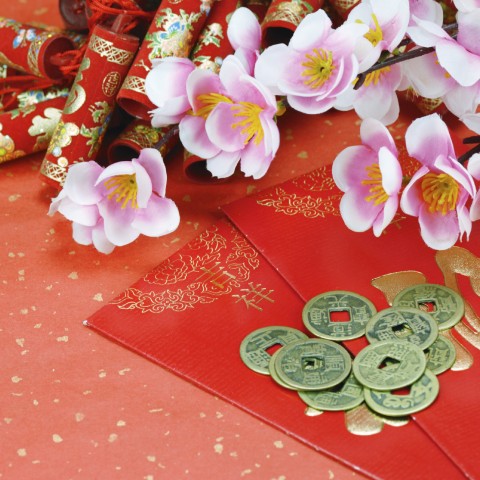











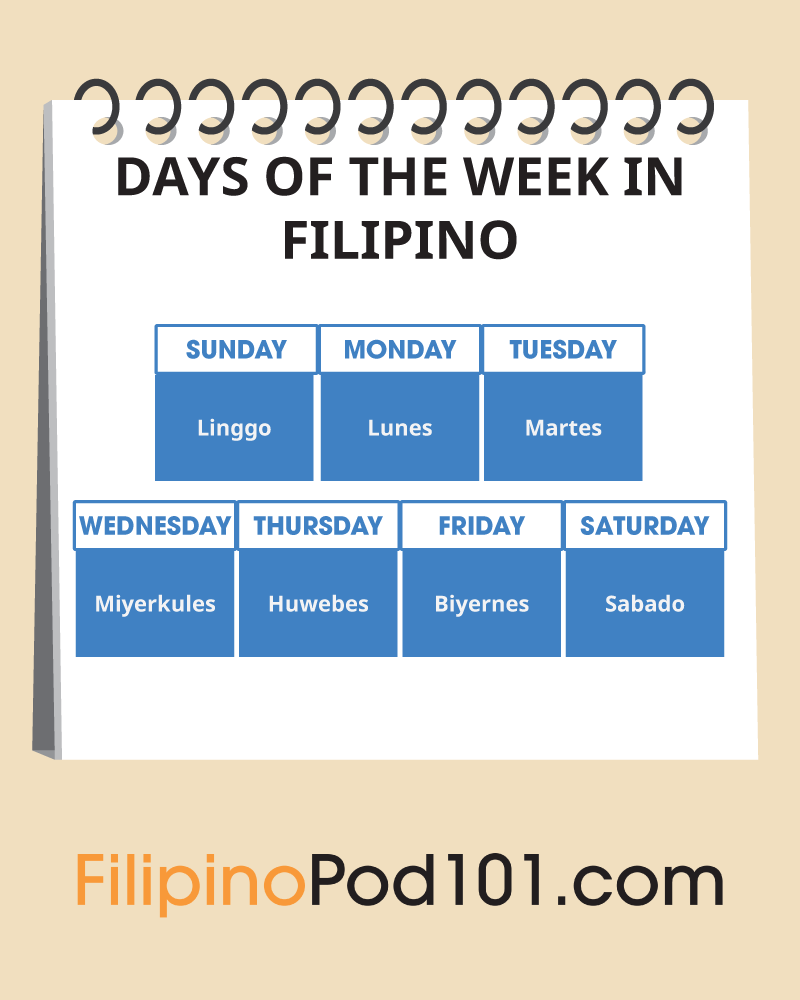















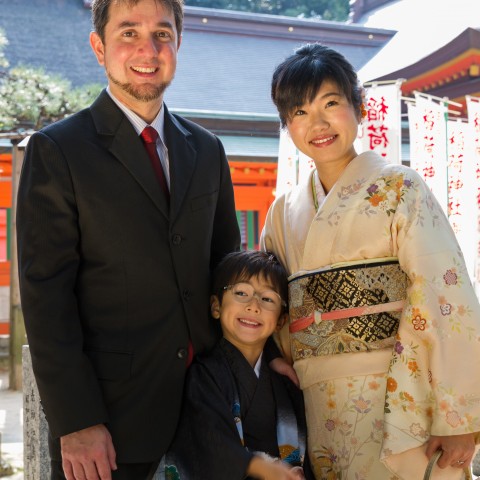








 Table of Contents
Table of Contents






 Table of Contents
Table of Contents










































